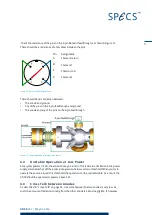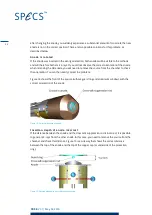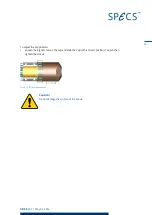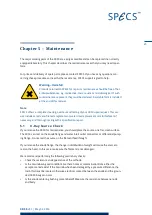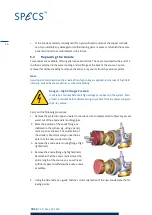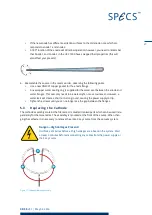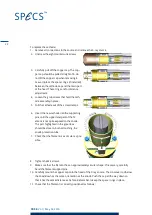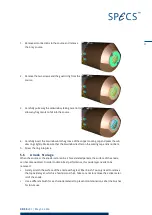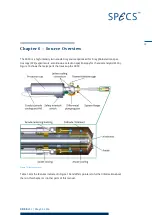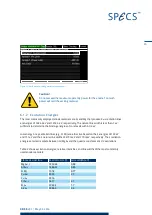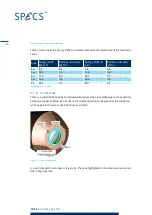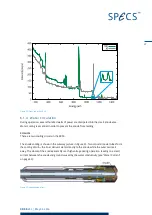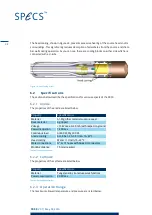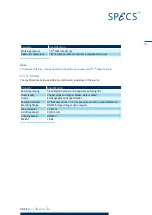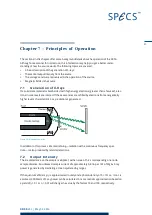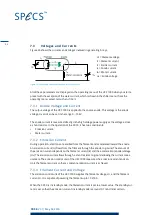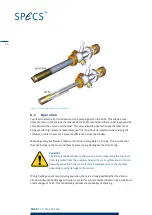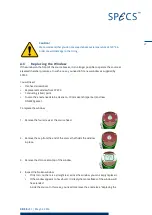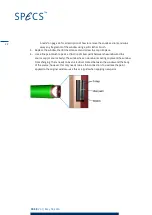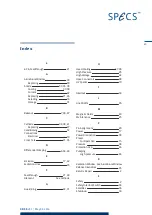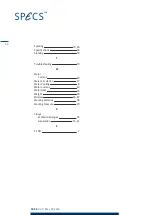
35
XR 50
V3.1 | May 02, 2016
Figure 20: Limits menu for setting maximum anode power
Caution!
Do not exceed the maximum operating power for the anode. Too much
power will melt the exciting material.
6.1.2
Excitation Energies
The most commonly employed anode materials are Al and Mg that produce K
α1,2
radiation lines
at energies of 1486.6 eV and 1253.6 eV, respectively. The natural line width is less than 1 eV;
sufficient to determine the binding energies of core levels within 0.2 eV.
Low energy X-ray excitation lines (e.g. Zr M
ζ
) are attractive based on their energies of 132 eV
and 151 eV and their natural line widths of 470 meV and 770 meV, respectively. Their radiation
energies are intermediate between Al/Mg K
α
and the quasi monochromatic UV excitations.
Table 2 shows excitation energies, relative intensities, and line widths of the most commonly
used anode materials.
Element and line
Excitation (eV)
Line width (eV)
Mg K
α1,2
1253.64
0.68
Al K
α1,2
1486.61
0.85
Zr M
ζ
151.4
0.77
Cu K
α1
8055
2.1
Cu L
α
931.6
Cr K
α1,2
5417
2.1
Zr L
α
2042.4
1.7
Ag L
α
2984.4
2.6
Summary of Contents for XR 50
Page 1: ...XR 50 XR 50 NAP X Ray Source User Manual V3 1 May 02 2016...
Page 6: ...XR 50 V3 1 May 02 2016 This page intentionally left vi...
Page 20: ...XR 50 V3 1 May 02 2016 This page intentionally left 14...
Page 30: ...XR 50 V3 1 May 02 2016 This page intentionally left 24...
Page 38: ...XR 50 V3 1 May 02 2016 This page intentionally left 32...
Page 46: ...XR 50 V3 1 May 02 2016 This page intentionally left 40...
Page 58: ......

